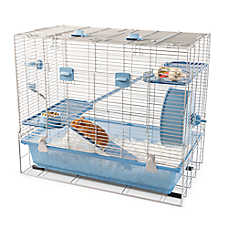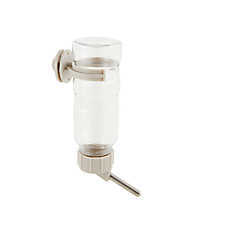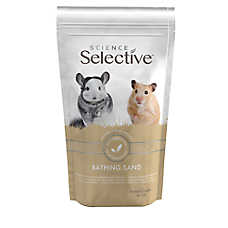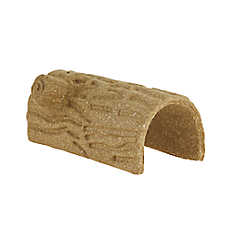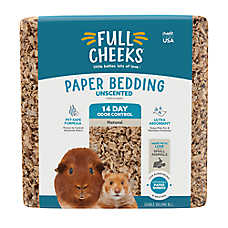Hamster Care Guide
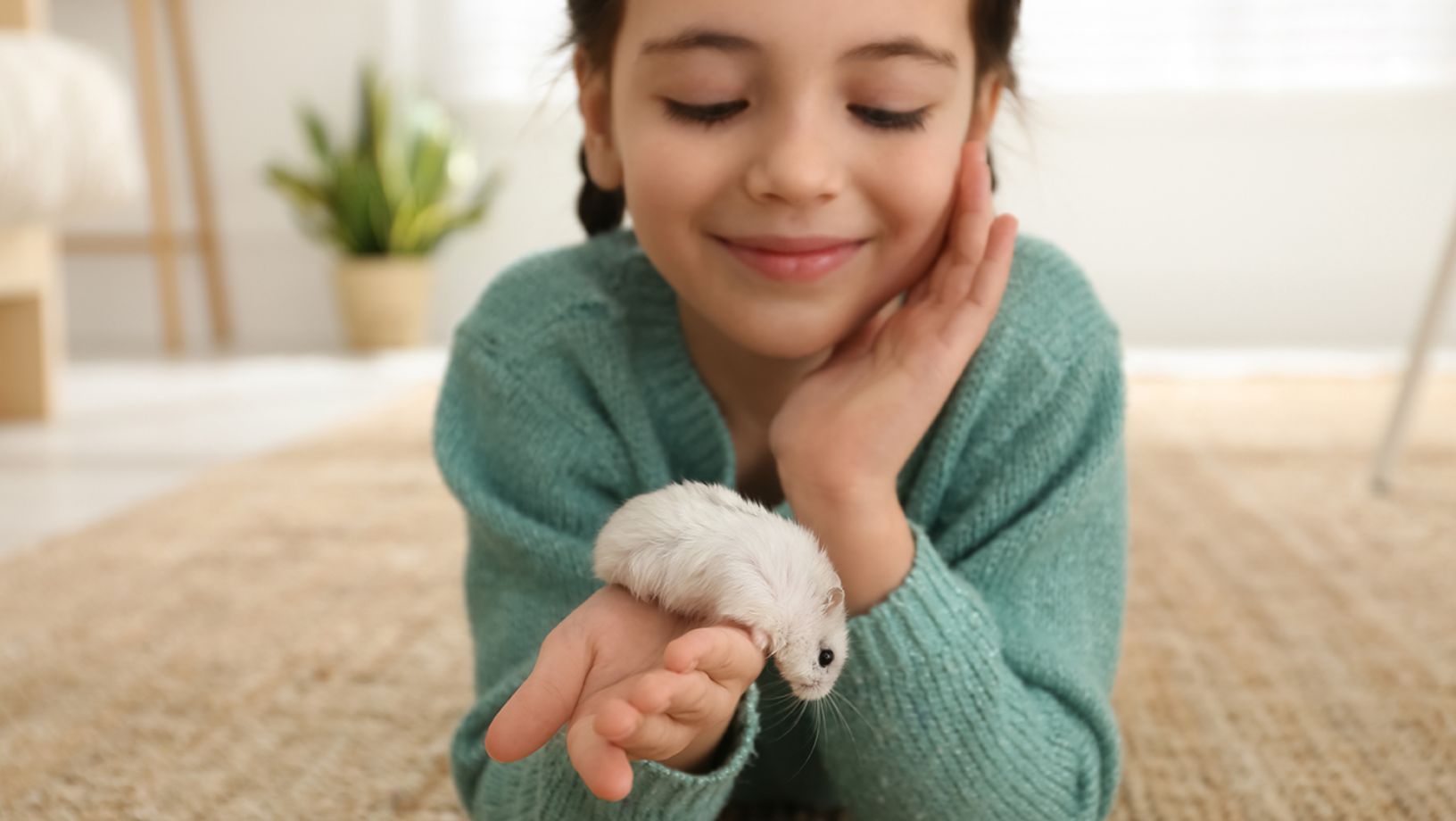
In this Article
Hamming it up with Hamsters!
Hamsters have been popular in the pet industry for a long time, and it’s easy to see why. With their small stature and variety of different fur colors and patterns, there’s so many to choose from! These tiny rodents don’t need as much space as some of their larger rodent cousins, such as guinea pigs, and can be wonderful additions to the family.
Species Profile:
Scientific/Common Name: Winter White hamster (Phodopus sungorus), Russian Dwarf hamster (Phodopus campbelli), Roborovski Dwarf hamster(Phodopus roborovskii), Syrian/Golden hamster (Mesocricetus auratus)
- Size: Dwarf hamsters are roughly 3” to 4”. Syrian hamsters are larger at 5” to 7”
- Lifespan: approximately 2yrs
- Behavior: Hamsters are nocturnal and are most active at night. They like to burrow into their bedding and gnaw on toys.
- Social needs: Pet hamsters do best living alone. Hamsters that live together are likely to fight and may seriously injure each other or themselves, regardless of gender.
Handling note: Hamsters can be a bit spicy and are not shy about using their teeth. They do not typically vocalize to warn that they are unhappy, so they may bite without warning. Hamsters are most likely to bite if they are being handled more roughly than they would like, if they are startled, if they are sick or hurt, or if they are disturbed from their rest. With patience and a gentle daily trust exercises, hamsters make wonderful pets and can become accepting of gentle handling.
Children should be supervised while interacting with hamsters, especially new less-tame hamsters. It is recommended that younger children spend time helping care for and feed the hamster, rather than have direct contact to avoid accidents and injuries to both children and hamster alike.
Setting up your Hamster habitat
Instead of water baths, hamsters take dust baths! Providing your hamster with bathing dust will give them enrichment as a natural way to bathe themselves, and give you some entertainment by watching them take a cute little bath. While hamsters will groom themselves, sand/dust baths are great enrichment and fun to watch too. Sand baths can be used about every other week.
Choosing the right hamster enclosure
Temperature and placement:
- Place your hamster habitat in an area that does not receive direct sunlight
- Hamsters prefer temperatures between 68°F and 75°F, and humidity around 40% up to 60%
Hamster bedding and cleaning
Bedding depth:
- Line the habitat with about 4-6" of bedding
- If your habitat has a deep base, make the bedding deep enough that your hamster can burrow
- Generally speaking, a hamster will happily burrow in 6in of bedding, but a deeper area of 10in should be provided if possible so your hamster can properly tunnel and burrow like they would in the wild
Safe bedding options:
- Safe bedding includes shredded paper bedding or soft wood shavings
- Avoid pine, cedar and corn cob for bedding
Cleaning schedule:
- Spot clean bedding as needed
- Fully change out the bedding and deep clean the cage every 2 weeks
Sand bath setup for hamsters
In lieu of traditional water baths, hamsters can use sand to clean themselves, just like chinchillas! For a sand bath, you can use a small dish approximately 2-3 inches deep and 6-8in wide and fill it with clean specialty bathing sand. Don't use yard dirt or sand as it could be contaminated from wild animals passing through.
Hamster habitat essentials
Enrichment items:
- Insert your enrichment! Place your exercise wheel, your chew(s), hides and nesting material
Exercise wheel safety for hamsters
Avoid using a wire or slatted exercise wheel. Instead, opt for a solid wheel. Wire or slotted wheels carry a risk of your hamster getting their leg caught between the slats and can be seriously injured. Solid wheels eliminate this risk and can be easier to clean as you don't have to get into as many nooks and crannies. Multi-level connections:
- If you have a multi-level enclosure, attach your transport tubes so your hamster can move between enclosure levels
Feeding your Hamster
Hamsters are omnivores in the wild and eat a variety of foods including seeds, nuts, plant vegetation and insects. Hamster pellets provide well balanced nutrition for your pet, but are not the only thing your hamster will need.
Daily hamster diet staples
Pelleted food:
- A pelleted hamster diet is the most complete diet option for your hamster
- This should be available 24/7, and the bowl refreshed daily
Seed diet caution:
- While a seed diet can be offered, hamsters will often pick and choose their favorite parts of the seed mixture and ignore the rest, which may result in nutrient deficiencies
Fresh vegetables for hamsters
Adding variety:
- Fresh vegetables should be offered in addition to the pelleted diet to increase variety into the diet as well as to help supplement hydration
Safe vegetable options:
- Safe vegetables include: spinach, kale, broccoli, carrots, zucchini and asparagus
Hamster treats and hay
Treat guidelines:
- Treats should be limited, and be low in sugar and fat to help prevent risk of obesity
Timothy hay:
- Timothy hay can also be offered for enrichment and variety
Foods that are toxic to hamsters
NEVER feed your hamster:
- Grapes, onion, garlic, avocado or rhubarb, as these are toxic for your pet
Understanding hamster feeding behaviors
Cheek pouches
Hamsters have cheek pouches that they use to store food in and carry for later. If you notice your hamster has one very big cheek after a meal, they likely just put some food in their cheek pouch to eat later or hide away. Check every so often that your hamster is actually eating their food, and they haven't hidden food in a corner of their habitat somewhere for it to end up spoiling.
Continuously growing teeth
Many rodents, including hamsters, have front teeth that keep growing their entire life. These are called "hypsodont" teeth and, unlike human teeth, hypsodont teeth will continually grow longer and longer. In addition to regular feedings, hamsters need things to gnaw on, like wood chew sticks, to keep their teeth at an appropriate length so they can chew and eat normally and without pain. If you notice your pet is having difficulty eating, you may want to have a vet evaluate their teeth to make sure they're not overgrown.
Hamster hydration
Water access:
- A water bottle attached to the side of the cage should be available at all times and refreshed daily
When to see a vet
In addition to regularly scheduled appointments, contact your small animal veterinarian if you notice the following signs:
- cloudy, sunken or swollen eyes
- wheezing
- sneezing; discharge from the eyes, nose or mouth
- overgrown front teeth
- drooling
- inability to close mouth, food falling from mouth frequently
- not eating
- bare patches in the fur
- sores or swelling/changes to the feet
- weight loss; not eating or drinking normally
- diarrhea or discolored droppings
SHOPPING CHECKLIST
- Solid-floored habitat or pen sized 350-450 sq inches or larger
- Pelleted hamster food
- Treats
- Food dish
- Water bottle
- Exercise wheel with solid bottom
- Toys and Wood chews
- Sand bathing dish.
- Hide box
- Litter/bedding material for cage
- Nesting material for burrowing and sleeping
FAQs
Can I house multiple hamsters together?
No, pet hamsters do best living alone. Hamsters that live together are likely to fight and may seriously injure each other or themselves, regardless of gender. Each hamster should have their own habitat.
What temperature is safe for my hamster?
Hamsters prefer temperatures between 68°F and 75°F, and humidity around 40% up to 60%. Place your hamster habitat in an area that does not receive direct sunlight to help maintain these conditions.
How often should I give my hamster a sand bath?
Sand baths can be used about every other week. Use a small dish approximately 2-3 inches deep and 6-8in wide and fill it with clean specialty bathing sand. Don't use yard dirt or sand as it could be contaminated from wild animals passing through.
What type of exercise wheel is safest for my hamster?
Avoid using a wire or slatted exercise wheel. Instead, opt for a solid wheel. Wire or slotted wheels carry a risk of your hamster getting their leg caught between the slats and can be seriously injured. Solid wheels eliminate this risk and can be easier to clean as you don't have to get into as many nooks and crannies.
What should I feed my hamster daily?
A pelleted hamster diet is the most complete diet option for your hamster. This should be available 24/7, and the bowl refreshed daily. Fresh vegetables should be offered in addition to the pelleted diet to increase variety and help supplement hydration. Safe vegetables include: spinach, kale, broccoli, carrots, zucchini and asparagus.
What foods are toxic to hamsters?
NEVER feed your hamster grapes, onion, garlic, avocado or rhubarb, as these are toxic for your pet. If your hamster consumes any of these foods, contact your veterinarian immediately.
Why does my hamster have puffy cheeks?
Hamsters have cheek pouches that they use to store food in and carry for later. If you notice your hamster has one very big cheek after a meal, they likely just put some food in their cheek pouch to eat later or hide away. This is normal behavior. Check every so often that your hamster is actually eating their food, and they haven't hidden food in a corner of their habitat somewhere for it to end up spoiling.
How do I know if my hamster's teeth are overgrown?
If you notice your pet is having difficulty eating, you may want to have a vet evaluate their teeth to make sure they're not overgrown. Hamsters need things to gnaw on, like wood chew sticks, to keep their continuously growing teeth at an appropriate length so they can chew and eat normally and without pain.
Are hamsters likely to bite?
Hamsters can be a bit spicy and are not shy about using their teeth. They don't typically vocalize to warn that they are unhappy, so they may bite without warning. Hamsters are most likely to bite if they are being handled more roughly than they would like, if they are startled, if they are sick or hurt, or if they are disturbed from their rest. With patience and gentle daily trust exercises, hamsters make wonderful pets and can become accepting of gentle handling.
©2025 PetSmart LLC Vet Assured™: Pets purchased at PetSmart are part of our exclusive Vet Assured™ program, designed by PetSmart veterinarians to help improve the health and well-being of our pets. Our vendors meet a high standard in caring for pets and screening them for common illnesses. This program also includes specific standards for in-store pet care.
The PetSmart Promise: If your pet becomes ill during the initial 14-day period, or if you’re not satisfied for any reason, PetSmart will gladly replace the pet or refund the purchase price.
This care guide contains general information for the proper care of your pet, but is not comprehensive and is not a substitute for veterinary advice or care. PETSMART and VET ASSURED are trademarks of PetSmart Home Office, Inc. © 2025 PetSmart. All rights reserved.
The PetSmart Promise: If your pet becomes ill during the initial 14-day period, or if you’re not satisfied for any reason, PetSmart will gladly replace the pet or refund the purchase price.
This care guide contains general information for the proper care of your pet, but is not comprehensive and is not a substitute for veterinary advice or care. PETSMART and VET ASSURED are trademarks of PetSmart Home Office, Inc. © 2025 PetSmart. All rights reserved.
